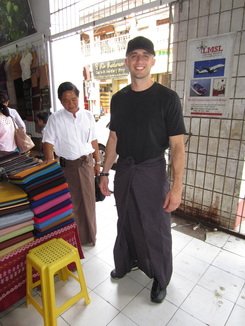
Joe's new lungi
Our tour of pagodas around Yangon was broken up by a trip to the Bogyoke Aung San market. This is Yangon's premier shopping location for locals. When I explain that Myanmar is still relatively untouched by tourists, this experience especially comes to mind. Most of the markets we've been to in southeast Asia have been jam packed. However, Bogyoke was quite empty and it was nice to walk around without getting bumped every other second. We hardly saw any other tourists here.
The market is really big with both local stalls and brand name stores, and you can find a wide variety of goods. There's a mix of both indoor and outdoor stalls. We admired everything from beautiful lacquered home goods (produced in Bagan, Myanmar where lacquer is the main art form) to loads of shiny jewelry. As we walked around, I noticed that there were random things gathered in some of the aisles. I asked Tony what these collections of goods were, and he explained that these were donation areas for monks. People in Myanmar will buy things at the market and donate them to local monasteries to support the monks as monks rely on the locals for everything.
During our shopping escapade, Joe was drawn to a stall full of lungis (remember, these are the long kilt-like garments that men in Myanmar wear in place of pants). Excited at the possibility of making a sell, the employee at the stall showed Joe how to properly wear a lungi. Joe liked it and bought it. Although the process of tying the lungi looked easy, we still haven't tried to replicate it. Luckily, I shot the video below for reference!
The market is really big with both local stalls and brand name stores, and you can find a wide variety of goods. There's a mix of both indoor and outdoor stalls. We admired everything from beautiful lacquered home goods (produced in Bagan, Myanmar where lacquer is the main art form) to loads of shiny jewelry. As we walked around, I noticed that there were random things gathered in some of the aisles. I asked Tony what these collections of goods were, and he explained that these were donation areas for monks. People in Myanmar will buy things at the market and donate them to local monasteries to support the monks as monks rely on the locals for everything.
During our shopping escapade, Joe was drawn to a stall full of lungis (remember, these are the long kilt-like garments that men in Myanmar wear in place of pants). Excited at the possibility of making a sell, the employee at the stall showed Joe how to properly wear a lungi. Joe liked it and bought it. Although the process of tying the lungi looked easy, we still haven't tried to replicate it. Luckily, I shot the video below for reference!
Bogyoke turned out to be a successful shopping stop for Joe and I. We found a really pretty set of chopstick holders that match perfectly with chopsticks that we bought at the Vung Vieng floating village in Halong Bay, Vietnam. And, I found a really cute lacquered owl figurine. It was really helpful to have Tony with us at the market because he acted as our middle man, doing the haggling on prices for us. Many people in Myanmar do not speak English very well, and it would have been difficult for us to strike deals on our own.
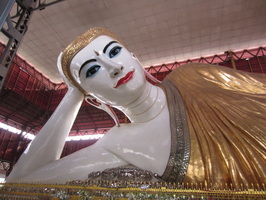
Reclining Buddha
After Bogyoke, we headed to the Chaukhtatkyi Pagoda which is the home of Myanmar's famous reclining Buddha. This Buddha is almost exactly the same as the one we saw in Bangkok, Thailand. The main differences are that the one in Yangon is lacquered and is slightly smaller. The intricate glass tile work of the display is very pretty and impressive.
Outside the room with the reclining Buddha there is a mini pagoda without an interior room. As we walked around it, Tony explained that there are three types of pagodas in Myanmar - ones you can walk into, ones that serve as tombs, and ones that have no interior room at all.
Outside the room with the reclining Buddha there is a mini pagoda without an interior room. As we walked around it, Tony explained that there are three types of pagodas in Myanmar - ones you can walk into, ones that serve as tombs, and ones that have no interior room at all.
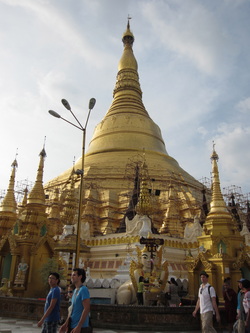
Shwedagon Pagoda
Our final pagoda tour of the day was of the Shwedagon Pagoda, which is one of the most famous pagodas in Myanmar. It was the largest complex we toured, with numerous shrines and buildings surrounding the main pagoda in the center. The main pagoda is the type that doesn't have an interior room. And unlike most pagodas around southeast Asia, Shwedagon is built with solid gold tiles rather than a coating of gold leaf. Tony explained that since gold leaf has to be replaced on a constant basis (it doesn't withstand the elements very well and flakes off easily), the architects of this pagoda thought it would be less maintenance to build with gold tiles.
Yes, gold tiles are far more opulent than gold leaf, but this isn't the only thing that is opulent about the pagoda. The tiny bulb at the very top of the steeple (which is actually quite big even though it looks small from afar) is covered in amazing jewels. While no one can actually go up and look at them, there are aerial photos displayed at the complex of what this looks like. The bulb is decorated with rubies and diamonds, and the main stone at the top is a 76-carat diamond. This diamond was donated to the pagoda by one of the former kings of Myanmar. I wish there was some sort of ride to the top so we could have seen this jewel in person!
Yes, gold tiles are far more opulent than gold leaf, but this isn't the only thing that is opulent about the pagoda. The tiny bulb at the very top of the steeple (which is actually quite big even though it looks small from afar) is covered in amazing jewels. While no one can actually go up and look at them, there are aerial photos displayed at the complex of what this looks like. The bulb is decorated with rubies and diamonds, and the main stone at the top is a 76-carat diamond. This diamond was donated to the pagoda by one of the former kings of Myanmar. I wish there was some sort of ride to the top so we could have seen this jewel in person!
The Shwedagon complex was very busy and bustling with activity as visitors waited for the sun to go down. Tony explained the pagoda is the most stunning at dusk because its golden exterior glimmers in the evening. So, we continued exploring the complex until this time. Joe and I admired numerous statues of Buddha, including one that is dedicated to people who need to pray for business success. This was a favorite of Joe's.
In addition to enjoying the structures on the complex, we loved people watching as well. Most of the visitors at the pagoda were people from Myanmar who were there to pray. They brought their cute children along, who had their cheeks painted with the traditional sunscreen. There was one really amusing girl who wanted to ring a donation bell on her own. Donation bells are set up around the complex. When you make a donation to the pagoda, you use a heavy wooden club to strike the bell. The little girl was slightly bigger than the club, so she had trouble picking it up. However, she was able to successfully strike the bell. While this surprised me, her own strength may have been more surprising to the little girl because she had a funny shocked look on her face. The photo I captured of this is priceless (see below).
Mixed among the people from Myanmar were groups of tourists from Thailand. Because most Thai people practice Buddhism, a trip to the Shwedagon Pagoda is very special for them. We also saw Thai monks who had been sponsored to make the trip to the pagoda. Tony could easily pick the Thai monks out of the crowd. He jokingly explained that most of them are more plump than the Myanmar monks. Also among the crowds, we saw groups of street sweepers. Tony explained that groups of volunteers gather at the pagoda on a daily basis to sweep the grounds. They all line up in a long row and sweep simultaneously, pushing dirt and debris into piles. People follow behind them with dust bins to collect the debris. We had to make sure to get out of the sweepers' way, because they had no hesitation sweeping the brooms over our feet!
In addition to enjoying the structures on the complex, we loved people watching as well. Most of the visitors at the pagoda were people from Myanmar who were there to pray. They brought their cute children along, who had their cheeks painted with the traditional sunscreen. There was one really amusing girl who wanted to ring a donation bell on her own. Donation bells are set up around the complex. When you make a donation to the pagoda, you use a heavy wooden club to strike the bell. The little girl was slightly bigger than the club, so she had trouble picking it up. However, she was able to successfully strike the bell. While this surprised me, her own strength may have been more surprising to the little girl because she had a funny shocked look on her face. The photo I captured of this is priceless (see below).
Mixed among the people from Myanmar were groups of tourists from Thailand. Because most Thai people practice Buddhism, a trip to the Shwedagon Pagoda is very special for them. We also saw Thai monks who had been sponsored to make the trip to the pagoda. Tony could easily pick the Thai monks out of the crowd. He jokingly explained that most of them are more plump than the Myanmar monks. Also among the crowds, we saw groups of street sweepers. Tony explained that groups of volunteers gather at the pagoda on a daily basis to sweep the grounds. They all line up in a long row and sweep simultaneously, pushing dirt and debris into piles. People follow behind them with dust bins to collect the debris. We had to make sure to get out of the sweepers' way, because they had no hesitation sweeping the brooms over our feet!
As we sat on a step and waited for the sun to set, Tony shared with us a little snippet of his life story. It turns out that his mom died when he was very young and his stepmother didn't like him. So, he left home at the age of six to become a monk at a local monastery (aha! I thought... this is how he knows so much about the monks!). Tony said life at the monastery was really strict but the education was valuable. This is where he learned to speak English so well. Despite being cared for, Tony didn't like the rigid life the monks had to live and left the monastery when he was 12 years old. He lived with his brother for a few years and then joined the military. This was a rough start to life, but Tony managed to make a better life for his children. Both his daughter and son successfully graduated from university. His son, a lawyer by trade, gave up his cushy life to work in social service to help care for the poor in Myanmar's rural areas. His daughter is an accountant. It's amazing to me that Tony was able to provide a successful life for his children despite the harsh rule by Myanmar's government!
As the sun set, people started lighting candles all around the pagoda and we got the view we had been waiting for...
As the sun set, people started lighting candles all around the pagoda and we got the view we had been waiting for...
It was certainly a stunning site to end our very busy day of touring!
I'm happy for Myanmar's change in government and for the chance that the country's people will have at a better life. However, it's unfortunate that these changes will likely mean that tourism ruins some of the natural aspects of the Myanmar culture that we had a chance to experience. Joe and I have already talked about going back someday to see how the country morphs.
I'm happy for Myanmar's change in government and for the chance that the country's people will have at a better life. However, it's unfortunate that these changes will likely mean that tourism ruins some of the natural aspects of the Myanmar culture that we had a chance to experience. Joe and I have already talked about going back someday to see how the country morphs.
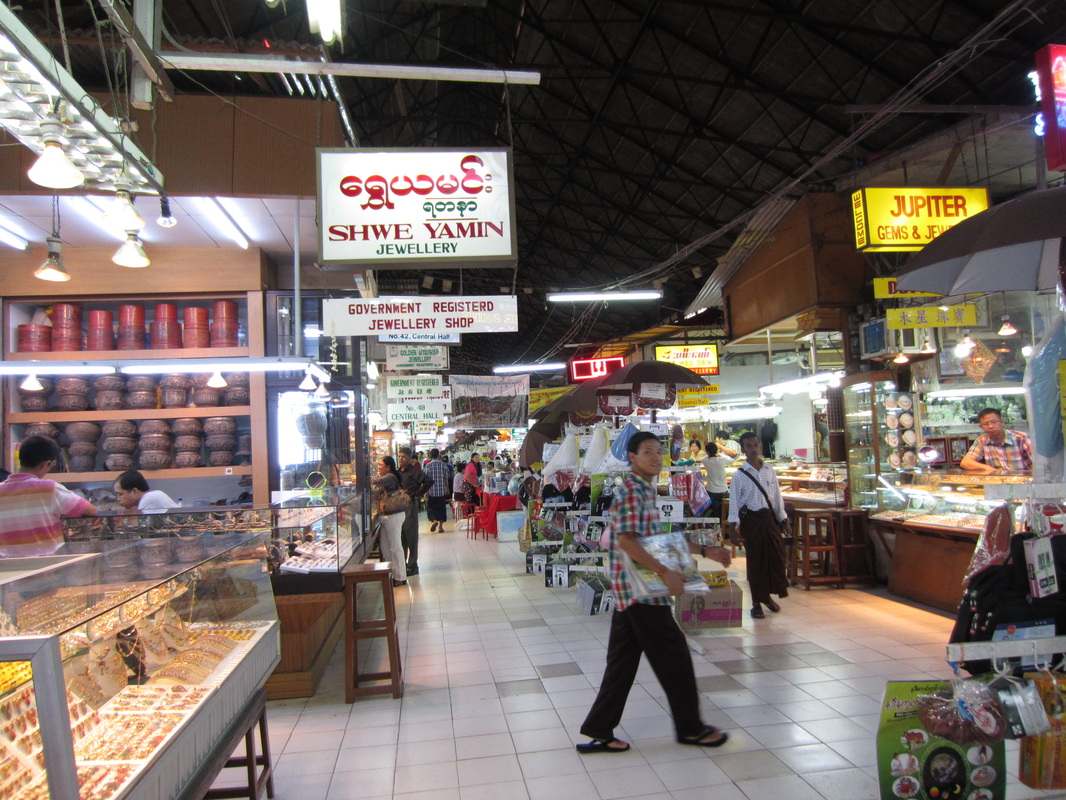

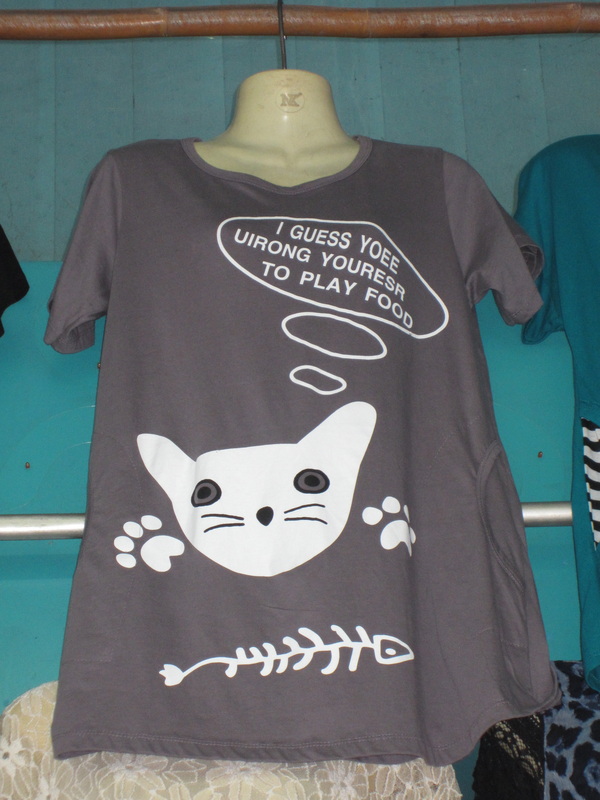
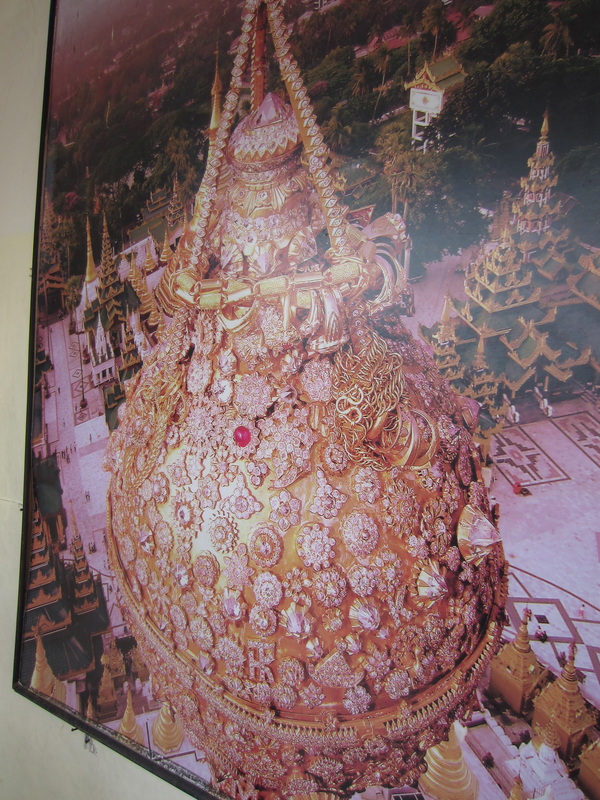
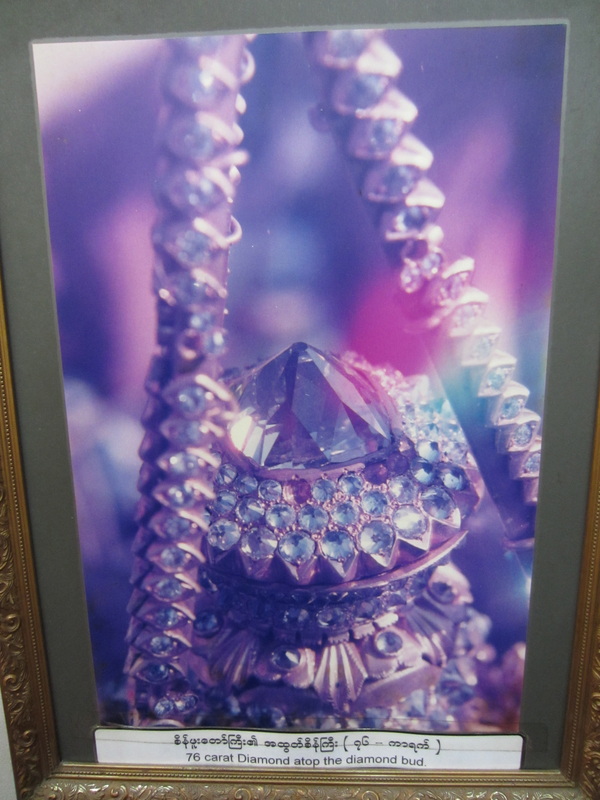
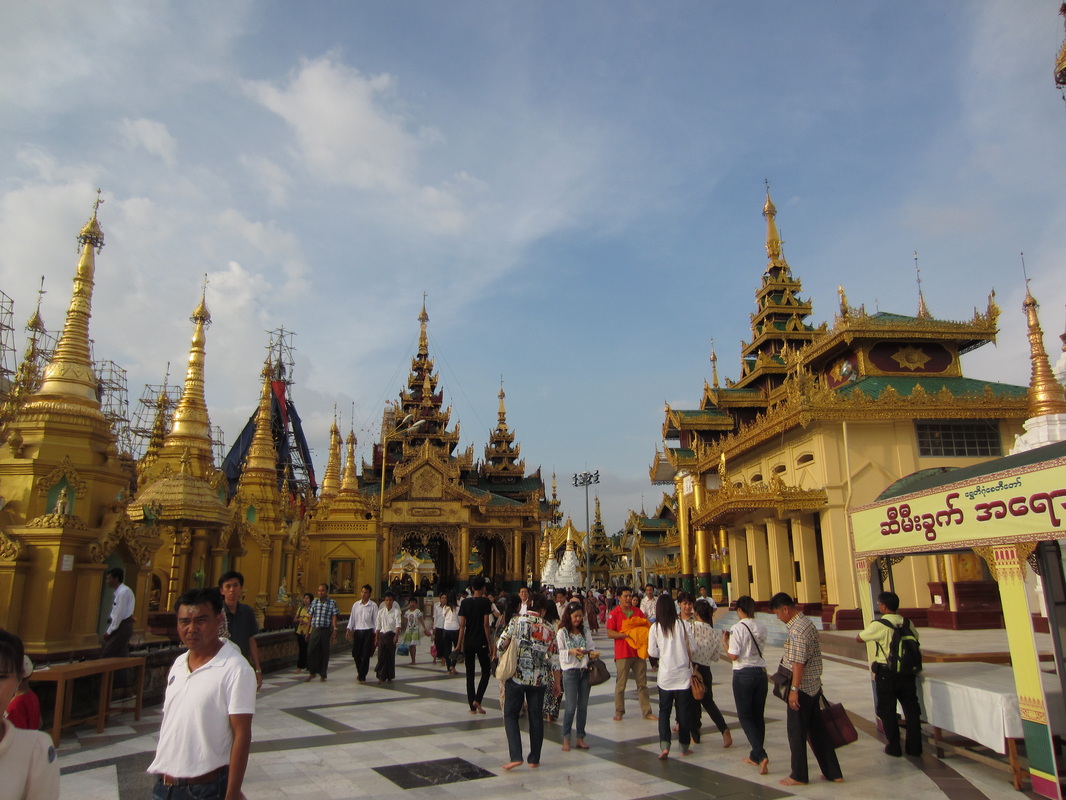
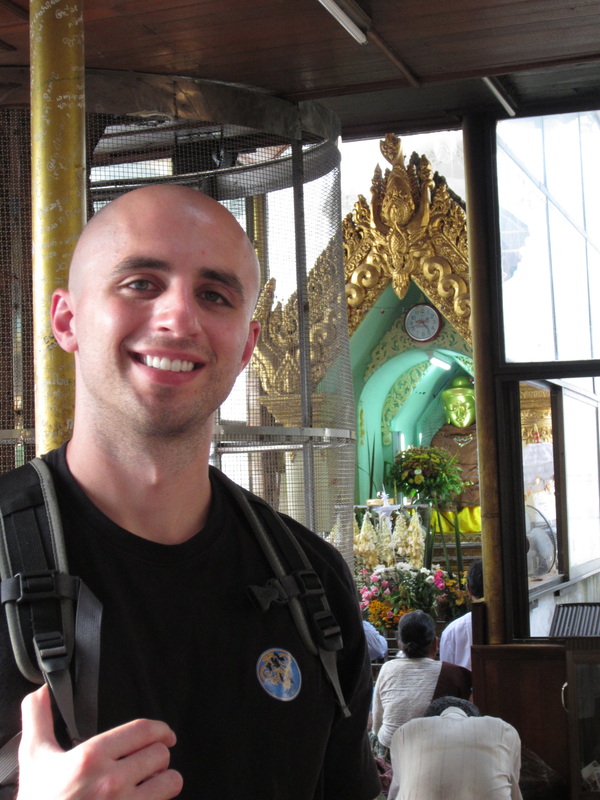
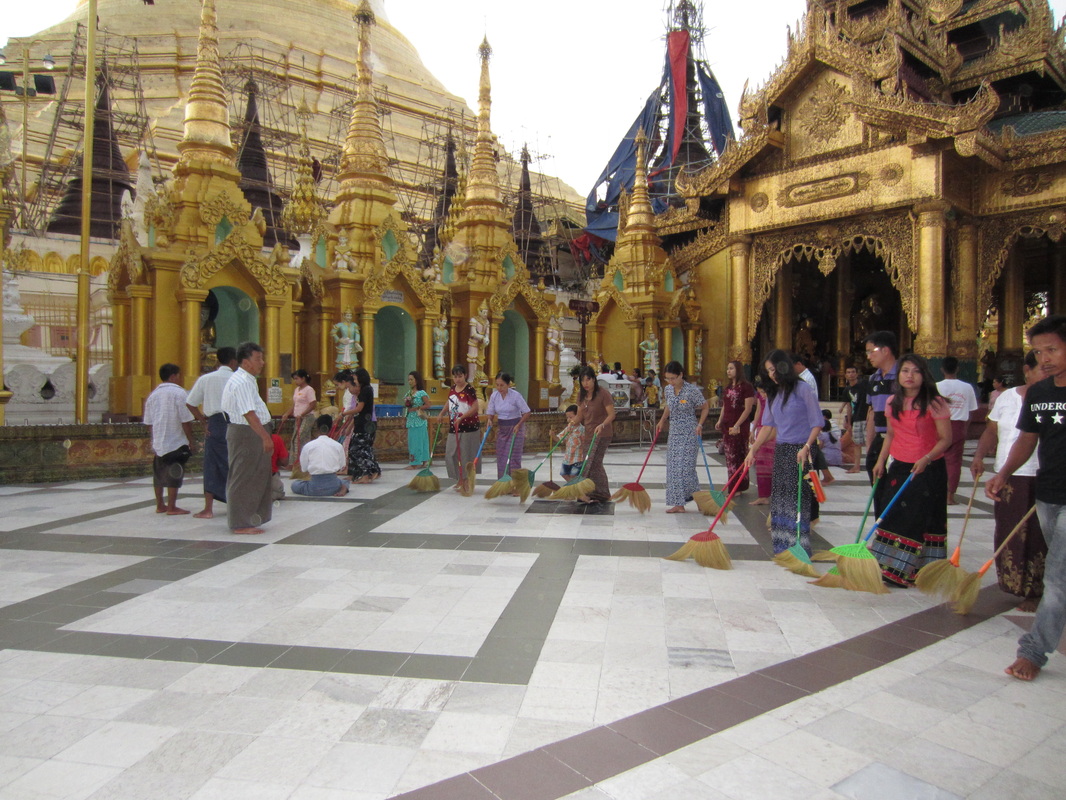

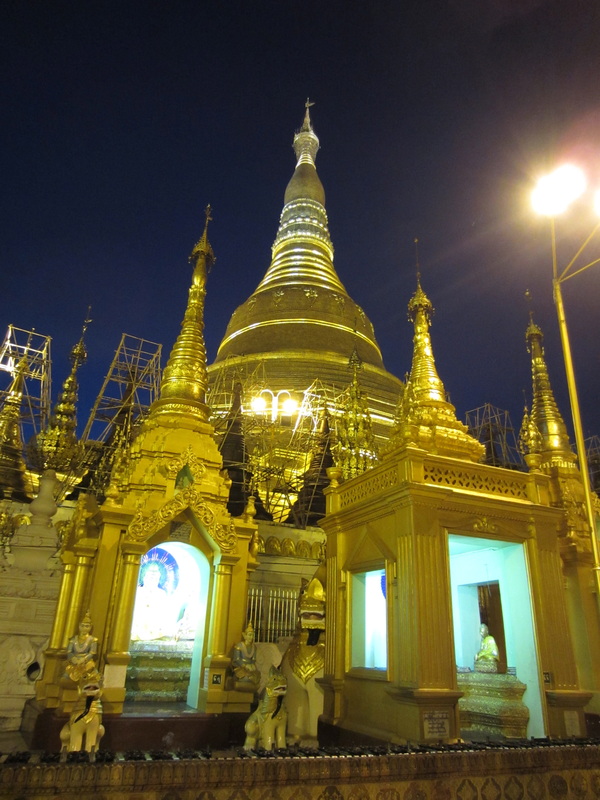
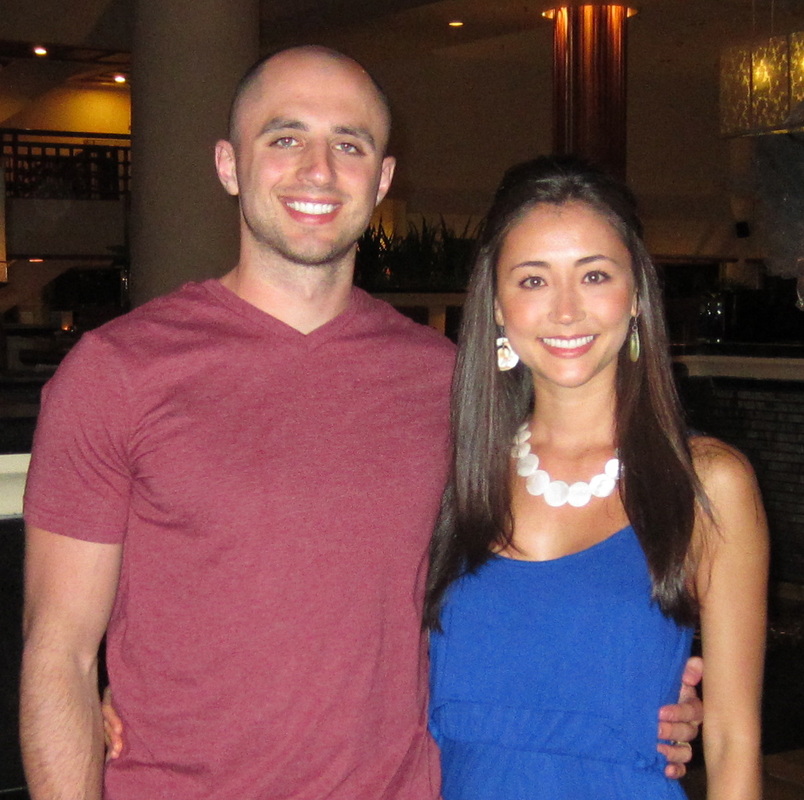
 RSS Feed
RSS Feed